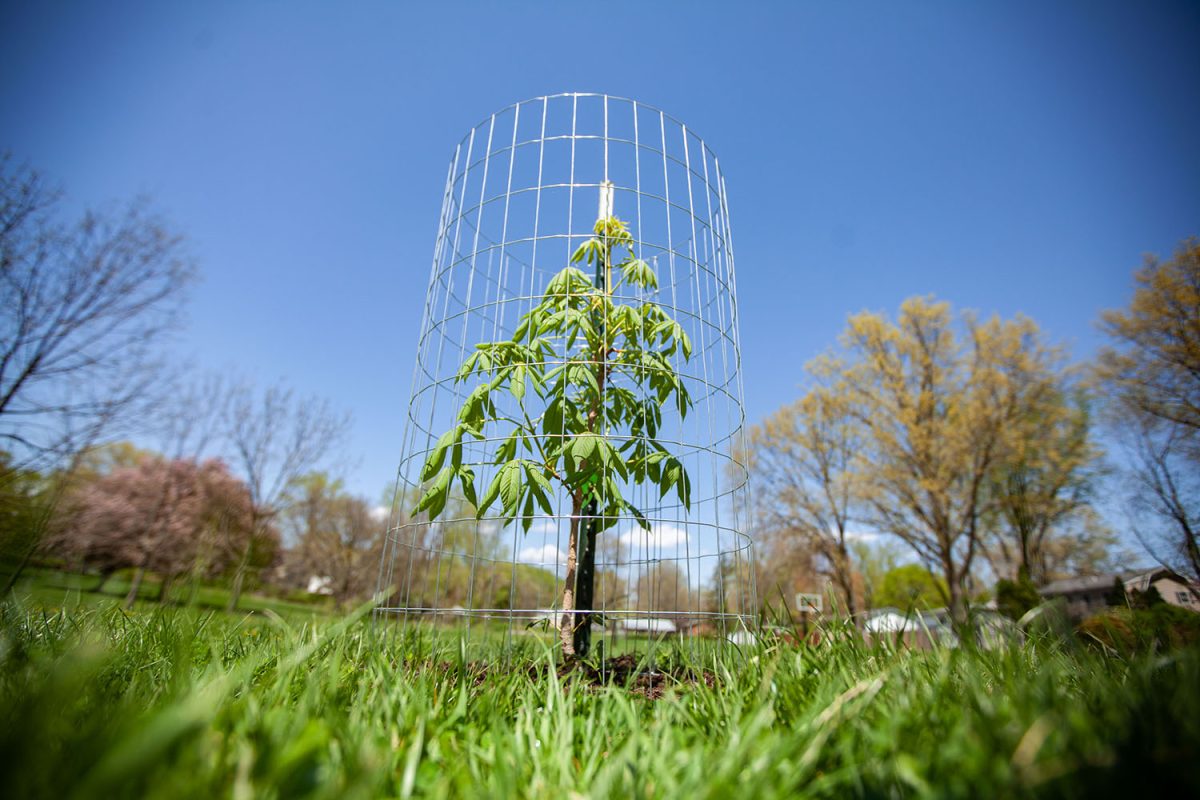The Iowa City Parks and Recreation Forestry staff are rolling up their sleeves to begin planting around 500 trees in median strips, which are the areas of land between sidewalks and roads, in western neighborhoods this month.
This year’s tree planting program began on Sept. 12, when trees were delivered to the City’s Park’s and Recreation Forestry Department. Staff will then begin planting the following week, which could take up to six weeks depending on weather and crew sizes, Alex Lorack, assistant superintendent of Iowa City’s Parks and Recreation department, said.
The tree planting initiative has been an ongoing tradition for the past several years, with new locations selected each year. City staff selected median strips, also known as the right-of-way, based on ground utilities, proximity to other trees, and diversity of species. Homeowners and neighborhoods were then contacted by city staff about the tree plantings in a release sent out on Aug. 27.
Lorack said the trees create numerous benefits which come at no costs to homeowners.
The tree planting program aims to provide new neighborhoods, especially with lots of buildings and houses, with more greenery. The program also provides new trees for neighborhoods and areas that have lost trees due to external situations, such as the parasitic emerald ash borer, Lorack said.
This year’s tree planting will include 28 different varieties, from shade trees all the way down to smaller ornamentals, Lorack said. Many of the trees were chosen specifically for their size, with smaller ornamental trees that will be placed underneath power lines.
“Trees have lots of benefits — air quality, energy reduction and erosion control, then just the beautification of the habitat and stuff like that,” he said.
The addition of trees will also assist in “decreasing water runoff and limiting flooding, decreasing carbon dioxide buildup, and providing shade to help the surrounding residents save on energy bills,” according to the parks and recreation website.
State Rep. Elinor Levin, D-Iowa City, said the care and maintenance of the trees is one of her top priorities for the program, as new trees are being planted in the district and her neighborhood.
She said a lack of maintenance is the main reason why trees planted following the derecho in 2020 failed to grow and survive. According to the Iowa DNR, a survey found the derecho damaged or destroyed around 7 million trees in Iowa.
“The care and maintenance of new trees is fairly time and labor intensive and is much easier when done at scale,” Levin said. “When one person knows what they’re doing and is on a schedule caring for 40 or 50 new trees, it’s actually logistically much easier than a whole bunch of individuals caring for new trees.”
In a statement on its website, the parks and recreation department wrote, “The city will remain responsible for the upkeep and maintenance of the trees planted in the right-of-way, but residents are encouraged to help water the newly planted trees if they are inclined.”
RELATED: Iowa City receives grants to plant trees
Levin believes the trees will add to the beautification of neighborhoods, and the additional shade in sunnier neighborhoods will encourage citizens to be outside.
“There’ll be sidewalks where you can walk down under tree cover where there’s shade,” Levin said. “Where you can set up a lemonade stand…or kids hanging out and kicking around a soccer ball — it goes a long way.”
Levin hopes the added trees will also serve as visual cues to drivers the neighborhoods are not highways, encouraging them to slow down.
Andrew Dahl, supervisor of Landscape Urban Forest and Services at the University of Iowa, discussed the university’s own tree planting plans and the benefits around campus.
Dahl said the university plants around 300 trees per year, with 125 planted this year. He said the initiative is intended to replace trees removed for a variety of reasons.
The trees around campus offer many benefits, according to Dahl. The trees provide shade, fall colors that make the campus pop, and stories to be learned and shared, he said.
“I like trees with stories, so I’m always on the lookout. For instance, we have Sir Isaac Newton’s apple tree out in our orchard, or the Anne Frank tree, or the trees from famous authors of the Writers’ Workshop.” Dahl said.
The university is always looking to improve the campus, and is planning a new reforestation project, which will take off next spring, he said. The project will take place northeast of Hillcrest Residence Hall using native trees planted in high densities.
“This causes the trees to grow really fast and create a forest with relatively little time,” Dahl said.
Lorack said they plan on continuing the planting initiatives for several more years.
“We’re typically shooting to do a tree planting each year. I mean, especially in the parks, but as far as the street trees, we’re going to try and keep doing this.” Lorack said. “We’ve done it for years, consecutive years up to this point, so we’ll just keep continuing to carry that tradition on for the foreseeable future.”



